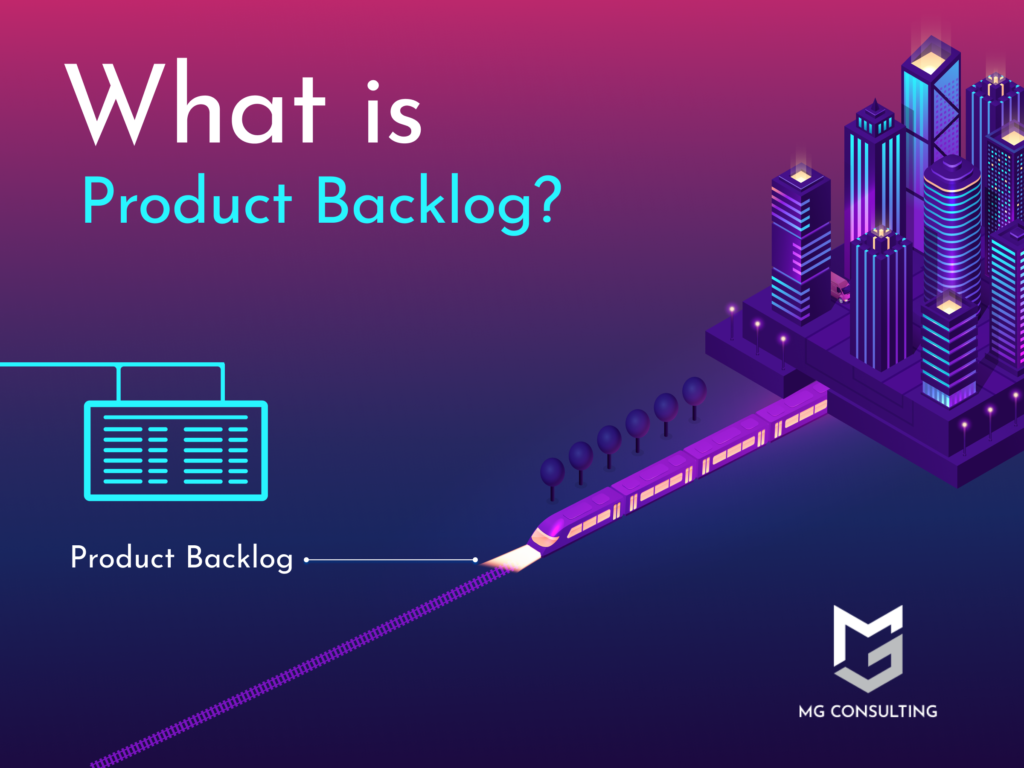Agile Product Backlog: How It Keeps Your Project on Track
We’re kicking off a new blog post series that will explore key concepts in the Scrum methodology, step by step. This series aims to demystify the complex world of Agile, making it more accessible and helping you manage projects more effectively.
In our first article, we’ll delve into one of the cornerstones of the Scrum methodology – the Agile Product Backlog. Think of it as a comprehensive arrivals and departures board for your project, guiding you through the dynamic landscape of Agile development. Have you ever wondered how Scrum teams know what to work on and when? The answer is simple: through the Product Backlog. For those unfamiliar with the term, it might sound like a puzzle. But fear not – with us, solving this puzzle will be easier than deciphering a train schedule.
So, let’s dive into the world of Agile and start with a fundamental building block – the Product Backlog.

The Foundation of Agile: The Product Backlog
The Product Backlog is like a meticulously planned travel itinerary. It’s a structured list of everything essential for your product’s development. It’s your single source of truth for requirements, dictating the path forward. The Product Owner takes charge of this crucial element, overseeing content, accessibility, and prioritization..
An Ever-Evolving Blueprint
Just as a train schedule adapts to route changes, the Product Backlog is never static. It starts as a snapshot of initial requirements, much like a historical map indicating known features. However, it adapts alongside the product’s growth and the ever-evolving environment.
A Dynamic, Living Artifact
The Product Backlog is dynamic, akin to a river that adjusts its course continuously. It undergoes constant changes to remain pertinent, competitive, and valuable. It’s a living artifact that thrives on adaptation.
Mapping the Way Forward
Like a comprehensive travel itinerary, the Product Backlog lists all the essential elements. These include features, functions, requirements, enhancements, and fixes that are integral to future product releases. Each item, much like a destination on your journey, comes with attributes such as description, order, estimate, and value. These items also include test descriptions, ensuring completeness when marked as “Done.”
Product Backlog in the Real World
As a product gains traction and garners feedback from the marketplace, the Product Backlog expands. It becomes a comprehensive inventory of what the product needs, similar to how your travel plans grow as you explore new destinations. Business requirements, market shifts, and technological advancements act as the catalysts for these changes.
One Backlog, Many Teams
Multiple Scrum Teams often collaborate on a single product, much like various travelers sharing the same train ride. One Product Backlog outlines the collective work needed for the product. Sometimes, Product Backlog attributes are used to group items for better organization.
The Art of Refinement
Product Backlog refinement is akin to maintaining the tracks on a well-traveled railway. It involves adding detail, estimates, and order to Backlog items, much like ensuring a train’s route is safe and efficient. The Product Owner and Development Team collaborate closely during this process. It’s an ongoing endeavor, ensuring items are always reviewed, revised, and ready for development.
Ordering the Priorities
Backlog items are akin to train stations on your journey, with higher-ordered ones being the prominent stops that are clear and well-detailed. Lower-ordered items represent the more distant, less-detailed destinations. Just like a well-organized train schedule, items refined for an upcoming sprint are prepared to be “Done” within the allocated time.
Who’s Responsible for the Estimates?
The Development Team holds the responsibility for estimating Backlog items, much like the onboard crew determining travel times. While the Product Owner can provide guidance, the ultimate estimate comes from those who will execute the work.
Navigating Progress
Monitoring progress is like tracking the miles left on your journey. The Product Owner keeps a close watch on the remaining work at every Sprint Review, comparing it with past reviews to gauge progress toward completing the project. This information is made transparent to all stakeholders, much like a journey’s route being visible to all travelers.
Predicting the Unpredictable
In the ever-changing landscape of Agile development, predicting progress is akin to forecasting the weather on your journey. Various projective practices help estimate future progress, like burn-downs, burn-ups, or cumulative flows. However, these methods do not replace the value of empiricism, using past experiences to make informed decisions in a complex environment.
Conclusion: Navigating the Agile Journey
Understanding the Agile Product Backlog is essential for a successful Agile journey. Like preparing for a trip, it involves crafting a structured itinerary, managing priorities, and refining your route for a smoother ride through Agile’s ever-evolving landscape. So, as you embark on your journey, let the Product Backlog be your trusted guide, ensuring your project stays on track and reaches its desired destination.
This post is part of our Agile series.

